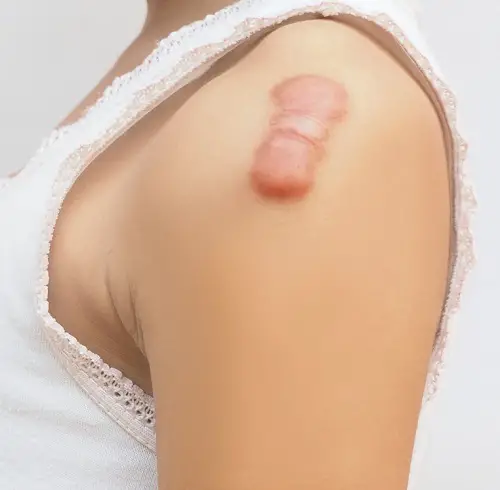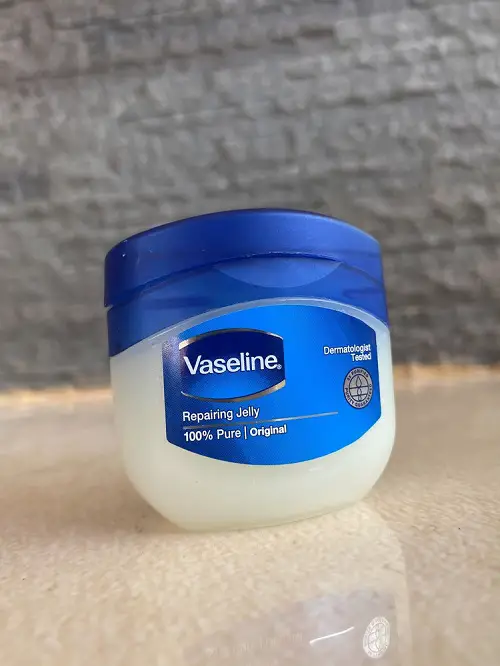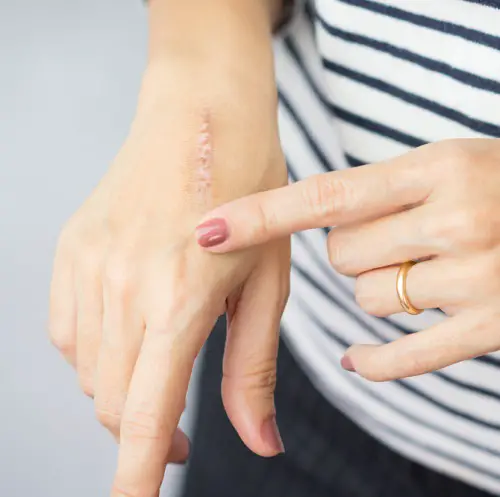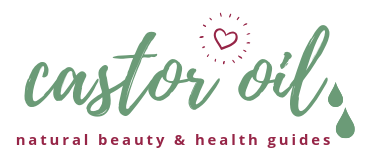Does Vaseline Help Scars? If you don’t know that your daily-use shelf product has more efficiency than you think, then keep reading to learn the science behind it
Scars are marks left on the skin after an injury or wound heals which can be unsightly, itchy, and sometimes painful. Many people want to get rid of them or at least make them less noticeable. But is Vaseline the answer? Does Vaseline Help Scars? Let’s find it out.
Types Of Scars

Different types of scars can form on the skin due to various causes like injuries, infections, surgery, or acne. Each scar type exhibits unique characteristics and appearances. Below, we explore some of the common types of scars and their distinct features:
1. Keloid Scars
Keloid scars are raised, thick, and reddish, extending beyond the original wound area. Excessive collagen production, continuing even after the wound heals, causes them. They may itch, cause pain, and restrict movement, especially if located near a joint. People with darker skin tones are more prone to keloid scars.
2. Contracture Scars
Contracture scars are tight, shiny, and sunken, forming when the skin and underlying tissues contract during healing. Severe burns or injuries leading to significant tissue loss usually cause them. They can limit mobility and functionality in areas like the fingers, neck, or mouth.
3. Hypertrophic Scars
Hypertrophic scars, while similar to keloid scars, remain within the original boundaries of the wound. They are raised, thick, and red but tend to fade and flatten over time. Excessive collagen production during healing causes these scars, but they are less severe than keloid scars.
4. Atrophic Scars
Atrophic scars are pressed, pitted, or indented below the skin surface. Loss of fat, muscle, or other supporting structures under the skin results in these scars. They typically occur after acne, chickenpox, or other skin-damaging infections.
5. Other Types of Scars
Adhesions are internal scars linking organs or tissues due to inflammation or trauma, causing discomfort and dysfunction. Acne scars arising from inflamed pores vary in type and appearance. Stretch marks resulting from rapid skin stretching appear as thin, linear scars due to elastic fiber breakdown, which is common in pregnancy and growth phases.
Does Vaseline Help Scars?

Vaseline is a brand name for petroleum jelly, a thick, greasy substance that is often used to moisturize dry skin, protect minor cuts and burns, and prevent diaper rash. But Does Vaseline Help Scars? It depends on the type and severity of the scar. Vaseline can be beneficial for some scars but not for others.
This can create a protective barrier on the skin’s surface to lock in moisture and help protect the skin while it heals. Sealing in moisture can also reduce the dryness and itchiness of scarred skin, making it look smoother and softer. Vaseline is also free from impurities, non-irritating, and hypoallergenic.
It cannot erase or remove the scars completely. Vaseline may not work well for deep or severe scars, such as keloid, contracture, or adhesion scars, that affect the underlying tissues or organs. This petroleum jelly may also clog the pores and cause acne or infection if applied to unclean or open wounds.
So, if you have a minor or superficial scar, such as an atrophic or stretch mark scar, you may try using Vaseline to keep it hydrated and reduce its visibility. However, if you have a major or complicated scar, you may need to consult a dermatologist or a plastic surgeon for other treatment options.
Components Of Vaseline
The main component of Vaseline is petroleum jelly, a semi-solid mixture of hydrocarbons derived from crude oil. Petroleum jelly has various properties that make it an ideal skin protectant and moisturizer. The hydrocarbons in Vaseline create a protective barrier on the skin. This barrier locks in moisture, which is crucial for keeping the scarred skin hydrated. Moisturized skin is less likely to form rigid, pronounced scar tissue. By maintaining a moist environment, Vaseline helps prevent the formation of hard scabs on wounds. Scabs can lead to more noticeable scarring; hence, their reduction can aid in minimizing scar appearance.
How Should I Use Vaseline On Scars?

To use Vaseline on scars, you should follow these steps:
- Clean the scarred area with mild soap and water and pat it dry with a clean towel.
- Apply a thin layer of Vaseline over the scar and gently massage it into the skin.
- Repeat this process two to three times a day or as directed by your doctor.
- Massage in a circular motion over a scar to distribute the Vaseline all over the scarred surface.
Note: Avoid applying Vaseline to open wounds, infected areas, or acne-prone skin, as it may clog the pores and cause more problems.
Benefits Of Using Vaseline On Scars
Some top-notch benefits of using Vaseline On Scars are listed below:
1. Vaseline is known for protecting minor cuts and burns. It creates a protective barrier on the skin’s surface to lock in moisture and help the skin heal.
2. Using Vaseline on scars may be beneficial during and after the healing process. It reduces the dryness, roughness, and itchiness of scarred skin, making it look smoother and softer.
3. Some studies suggest that Vaseline can improve the overall appearance of scars by reducing redness, softening the scar tissue, and enhancing healing. These positive outcomes might be attributed to Vaseline’s moisturizing effects, which can help keep the scar hydrated and prevent excessive dryness.
4. Vaseline may also help with different types of scars, such as atrophic scars (caused by acne or chickenpox) and stretch marks (caused by rapid skin stretching). By moisturizing the skin regularly. It helps to improve the skin’s elasticity and texture around the scar.
Things To Keep In Mind Before Using Vaseline On Scars
- Vaseline is not a substitute for proper wound care. It should only be applied on clean and disinfected wounds to prevent infection and promote healing.
Vaseline may not be suitable for people with sensitive skin or allergies to petroleum products. It may cause irritation, itching, or rash in some cases. - The petroleum jelly may clog pores and cause acne, especially if used on the face or other areas prone to breakouts. It may also trap dirt and bacteria on the skin, leading to more inflammation and scarring.
- It shall not be used on open wounds.
- Vaseline may not be effective for all types of scars, such as hypertrophic scars (raised and thickened scars) or keloids (overgrown scars that extend beyond the original wound). These scars may require other treatments, such as silicone gel, steroid injections, or surgery.
